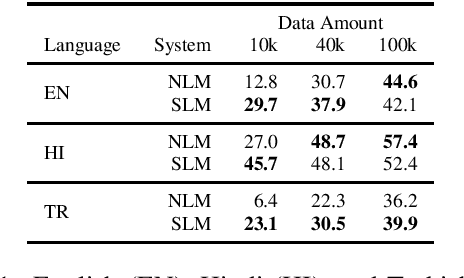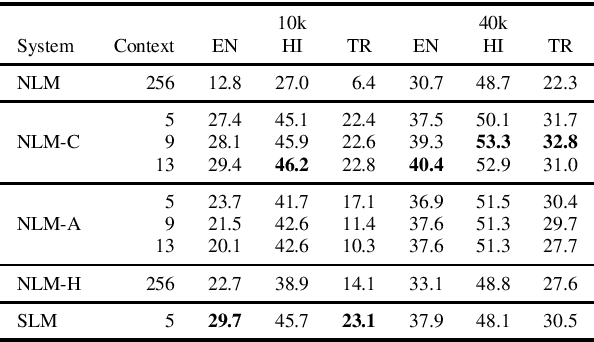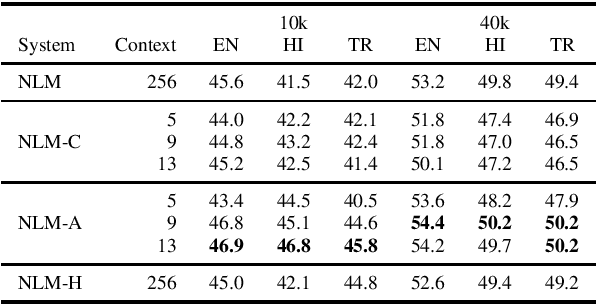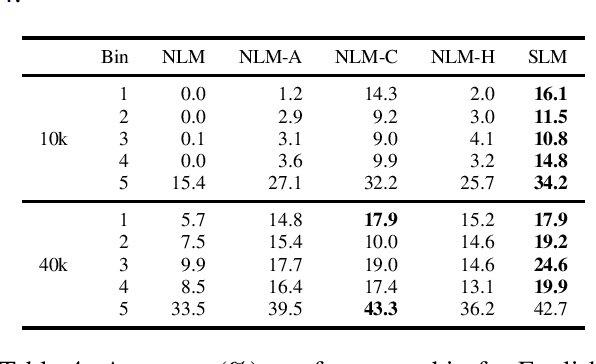The Importance of Context in Very Low Resource Language Modeling
Paper and Code
May 10, 2022



This paper investigates very low resource language model pretraining, when less than 100 thousand sentences are available. We find that, in very low resource scenarios, statistical n-gram language models outperform state-of-the-art neural models. Our experiments show that this is mainly due to the focus of the former on a local context. As such, we introduce three methods to improve a neural model's performance in the low-resource setting, finding that limiting the model's self-attention is the most effective one, improving on downstream tasks such as NLI and POS tagging by up to 5% for the languages we test on: English, Hindi, and Turkish.
 Add to Chrome
Add to Chrome Add to Firefox
Add to Firefox Add to Edge
Add to Edge